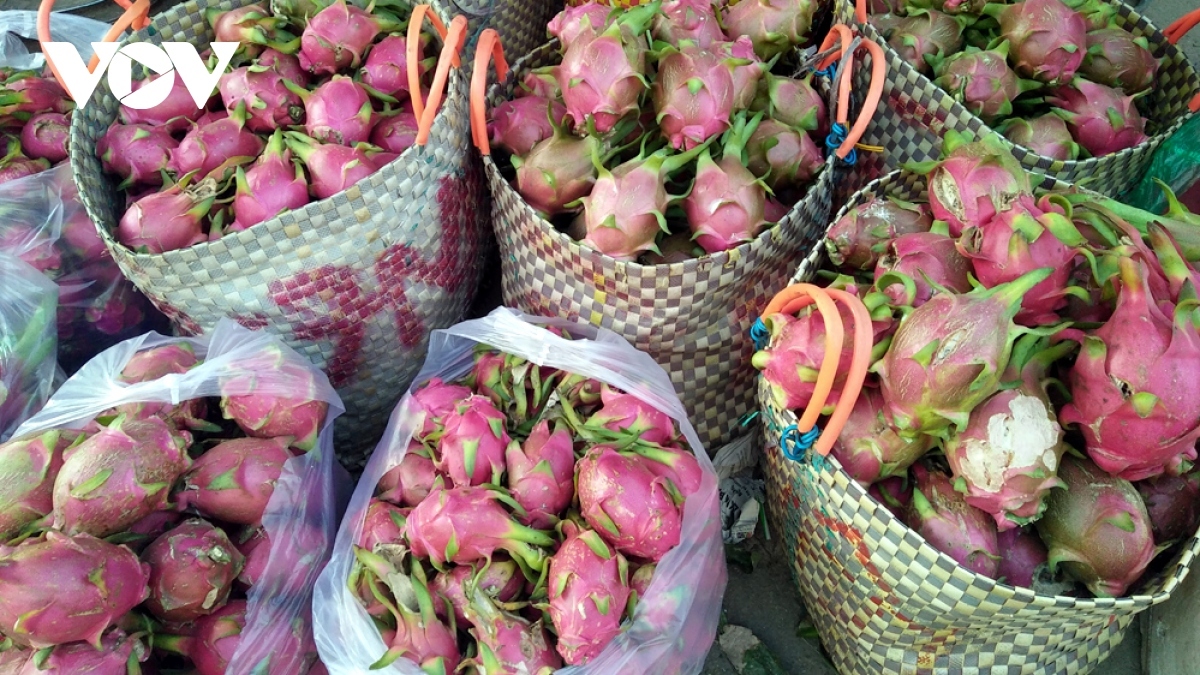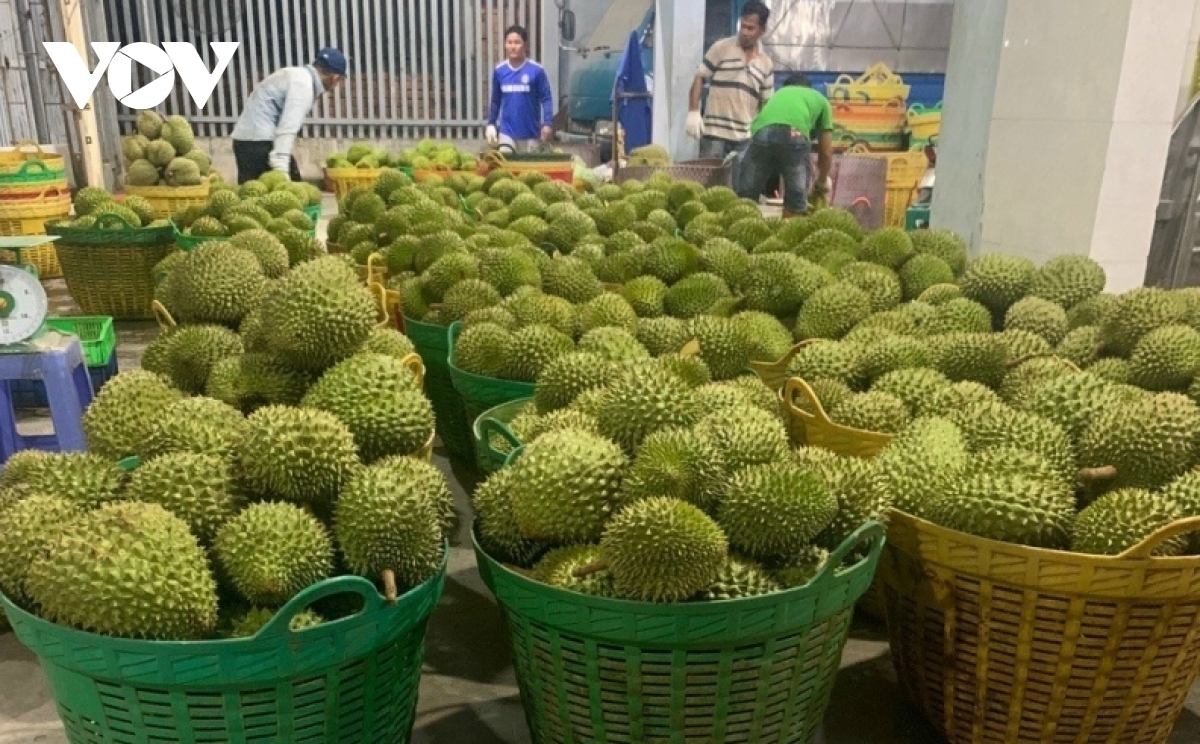Growing competitive pressure for Vietnamese fruits
VOV.VN - China that consumes most of Vietnamese dragon fruit and durian has expanded the area of land under fruit cultivation moving towards self-sufficiency in fruit supply, a move that causes a great concern for growers and exporters of these fruits.
Under great competitive pressure

Currently China has 67,000 hectares of land under dragon fruit cultivation with an anticipated output of approximately 1.6 million tonnes, making it the largest grower of the fruit in the world.
As a consequence, the export of Vietnamese dragon fruit has declined considerably over the past three years. Statistics show the export turnover of the fruit only fetched US$663 million in 2022, down 37% compared to the previous year and 50% compared to 2019’s figure, due to China’s tightened quarantine for imports. Notably, dragon fruit has no longer been among export items that brings in more than US$1 billion each every year.
In addition to dragon fruit, China is also able to grow other tropical fruits, including durian - a Vietnamese fruit that was recently licensed by Chinese authorities to be officially shipped to their market.
It has successfully piloted durian growing in southern localities with an area of 2,000 hectares, and it is expected that between 45,000 - 75,000 tonnes will be marketed next year. Furthermore, China plans to develop durian farms in Laos, with a total area amounting to tens of thousands of hectares.
Nguyen Thi Thanh Thuc, director of Bagico Investment JSC, pointed out Vietnam reveals a competitive weakness in logistics, referring to the China - Laos - Thailand train route that makes it easier for durians grown in Thailand and Laos to be transported to China. In addition, Vietnam’s farming techniques to ensure the uniformity of the product are rather weak.
Sharing the perspective, Phan Viet Ha, deputy director of the Tay Nguyen Agricultural and Forestry Science Institute, said until now Vietnam has not mastered the techniques of growing and caring for durian. Furthermore, processing and preservation infrastructure is not consistent, not to mention market risks.
“Currently the market mainly relies on China, and there will be a lot of problems if we develop farming on a large scale,” stressed Ha.
The fact is that up to 80-90% of Vietnamese durian output is exported to China, while the area that has been granted a planting area code for official use is less than 5%. This means the Vietnamese durian has to solve problems in terms of quality, technology, brand, and market to improve its competitive advantage.
Increasing competitiveness – a must

According to the Vietnam Fruit & Vegetables Association, China’s plan to increase the area under dragon fruit and durian cultivation will not immediately affect the export of these two types of fruit, and it is the time for Vietnamese farmers and businesses to sharpen the competitive edge of their products.
Le Anh Trung, chairman of the Board of Directors of BIV Vietnam JSC, underlined the need to accelerate digital transformation for raw material areas to meet traceability for export companies.
“All small cooperatives and cooperatives members of our company access digital transformation services free of charge,” said the CEO.
Dang Kim Son, former director of the Institute of Policy and Strategy for Agriculture - Rural Development, suggested that Vietnam focus on building complete specialized farming areas closely linked to the entire value chain, alongside building brands and meeting food safety requirements.
“By doing so, we will create the special added value of Vietnamese products,” he emphasized.
It’s worth remembering that Vietnamese farmers recently suffered a great loss when the selling price of dragon fruit dropped sharply to just VND2,000-3,000 per kilogram. At that time, China did not have demand for importing the product as it was entering the harvesting season of dragon fruit locally.
Businesses have no choice but to seek new outlets and gradually reduce dependence on a single market so that their products are no longer forced to suffer price squeezing or lose market share in the future.

